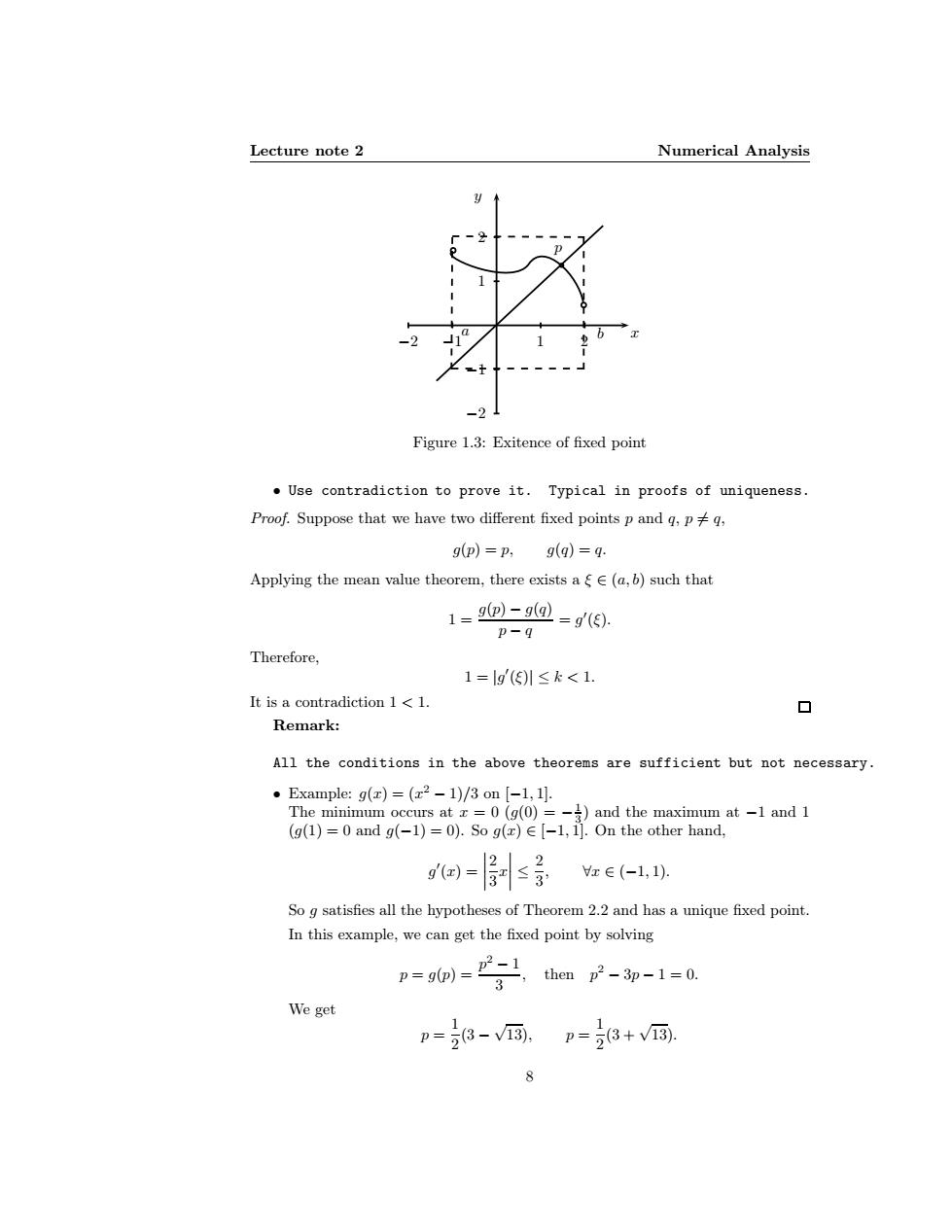正在加载图片...

Lecture note 2 Numerical Analysis 、2 Figure 1.3:Exitence of fixed point Use contradiction to prove it.Typical in proofs of uniqueness. Proof.Suppose that we have two different fixed points p and q,pq, g(p)=p,g(q)=q. Applying the mean value theorem,there exists a E(a,b)such that 1= 9p)-9@=g(5). P-4 Therefore, 1=lg()≤k<1. It is a contradiction 1 1. 口 Remark: All the conditions in the above theorems are sufficient but not necessary. ·Example:g(z)=(x2-1)/3on[-1,1. The minimum occurs at x=0(g(0)=-)and the maximum at-1 and 1 (g(1)=0 and g(-1)=0).So g(x)E[-1,1].On the other hand, g()= s景 x∈(-1,1). So g satisfies all the hypotheses of Theorem 2.2 and has a unique fixed point. In this example,we can get the fixed point by solving p=o=号mf-p-1=0 We get 1 p=3-v,p=3+V. 8Lecture note 2 Numerical Analysis p x y −2 −1 1 2 1 2 −1 −2 b a b Figure 1.3: Exitence of fixed point • Use contradiction to prove it. Typical in proofs of uniqueness. Proof. Suppose that we have two different fixed points p and q, p 6= q, g(p) = p, g(q) = q. Applying the mean value theorem, there exists a ξ ∈ (a, b) such that 1 = g(p) − g(q) p − q = g ′ (ξ). Therefore, 1 = |g ′ (ξ)| ≤ k < 1. It is a contradiction 1 < 1. Remark: All the conditions in the above theorems are sufficient but not necessary. • Example: g(x) = (x 2 − 1)/3 on [−1, 1]. The minimum occurs at x = 0 (g(0) = −1 3 ) and the maximum at −1 and 1 (g(1) = 0 and g(−1) = 0). So g(x) ∈ [−1, 1]. On the other hand, g ′ (x) =
2 3 x
≤ 2 3 , ∀x ∈ (−1, 1). So g satisfies all the hypotheses of Theorem 2.2 and has a unique fixed point. In this example, we can get the fixed point by solving p = g(p) = p 2 − 1 3 , then p 2 − 3p − 1 = 0. We get p = 1 2 (3 − √ 13), p = 1 2 (3 + √ 13). 8